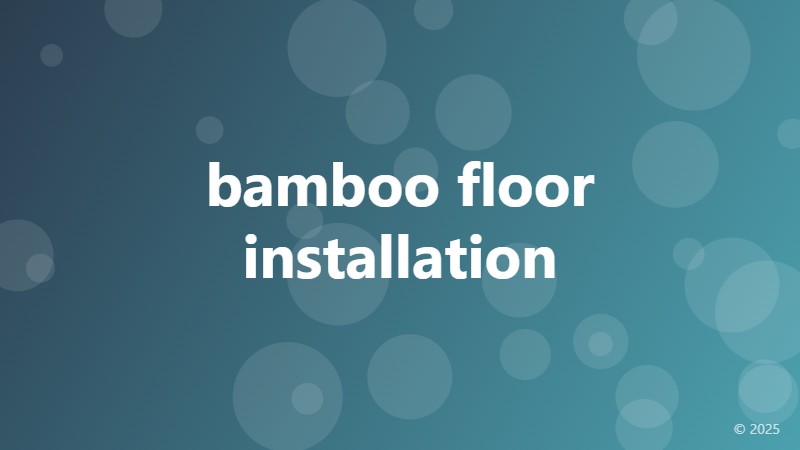bamboo floor installation

Bamboo Floor Installation: A Step-by-Step Guide
Bamboo flooring has become increasingly popular in recent years, and for good reason. It's a highly sustainable, eco-friendly, and durable option that can add warmth and character to any room. However, installing bamboo flooring can be a daunting task, especially for DIY enthusiasts. In this article, we'll take you through a step-by-step guide on how to install bamboo flooring like a pro.
Preparation is Key
Before you start installing your bamboo flooring, it's essential to prepare the subfloor. This involves ensuring the floor is level, clean, and dry. You should also check for any cracks or unevenness and fill them with a self-leveling compound. Additionally, remove any old flooring, baseboards, and door thresholds to create a clean slate for your new bamboo floor installation.
Choosing the Right Bamboo Flooring
With so many types of bamboo flooring available, it can be overwhelming to choose the right one. There are three main types: horizontal, vertical, and strand-woven. Horizontal bamboo flooring is the most common and features a natural, horizontal grain pattern. Vertical bamboo flooring has a more linear, vertical grain pattern, while strand-woven bamboo flooring is the most durable and features a woven pattern.
Installing the Underlayment
Once you've chosen your bamboo flooring, it's time to install the underlayment. This is a critical step, as it provides a smooth surface for your flooring and helps to reduce noise. You can choose from a variety of underlayment materials, including foam, cork, and rubber. Follow the manufacturer's instructions for installation, and make sure to cover the entire subfloor.
Laying the Bamboo Flooring
Now it's time to start laying your bamboo flooring. Begin by starting from the center of the room and working your way outwards. Use a chalk line to mark the location of the first row, and then use a tapping block and a hammer to tap the planks into place. Make sure to leave a 1/4 inch gap between each plank for expansion.
Finishing Touches
Once you've completed the bamboo floor installation, it's time to add the finishing touches. Install new baseboards and door thresholds, and apply a finish to protect your flooring. You can choose from a variety of finishes, including polyurethane, oil-based, and water-based. Follow the manufacturer's instructions for application and drying times.
With these steps, you'll be well on your way to a successful bamboo floor installation. Remember to take your time, follow the manufacturer's instructions, and don't be afraid to ask for help if you need it. With the right preparation and installation, your bamboo flooring will last for years to come.